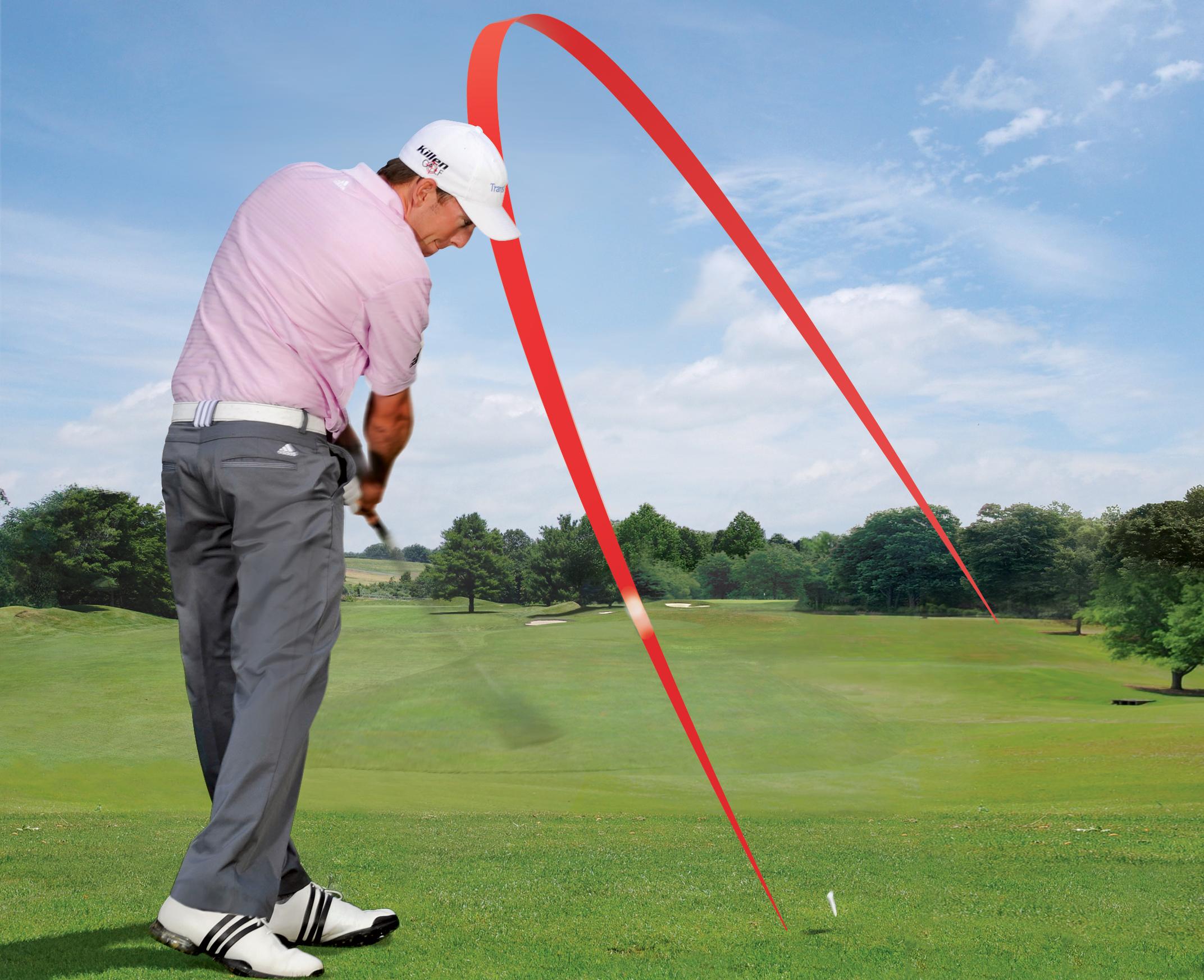What is a Slice in Golf: Basics of Golf Shots
What is a Slice in Golf
A slice in golf is a shot that curves dramatically away from the golfer’s dominant hand. For a right-handed golfer, this means the ball will start off left of the target and then curve significantly to the right. It’s essentially an unwanted and uncontrolled ball flight.
Here’s a breakdown of a slice:
- Direction: Curves right (right-handed golfer), left (left-handed golfer)
- Cause: Typically caused by a clubface that’s open (pointing right for right-handed golfers) at impact, creating sidespin.
- Impact: Reduces distance and makes it difficult to control accuracy. Golf par explained
It’s important to distinguish a slice from a fade, which is a controlled shot with a slight rightward curve. Slices are generally much more pronounced and unintended.
Why is a Slice Bad
A slice is generally considered bad in golf for several reasons:
- Loss of Distance: When a slice occurs, the ball tends to curve away from the intended target line. This can result in a significant loss of distance since the energy transfer from the club to the ball is compromised.
- Inaccuracy: Sliced shots often veer off target, missing the intended landing area or fairway. This can lead to difficult recovery shots and higher scores on the hole.
- Difficulty Controlling Spin: Slices typically impart sidespin on the ball, making it harder to predict its flight path and landing location. This unpredictability can make it challenging to plan subsequent shots effectively. Scratch golfer definition

- Course Management Challenges: Golf courses are designed with hazards and obstacles strategically placed along the fairways. A slice increases the likelihood of landing in these hazards, such as bunkers, water hazards, or rough, which can result in penalty strokes or difficult lies.
- Decreased Confidence: Consistently slicing the ball can erode a golfer’s confidence in their ability to execute shots effectively. This can lead to frustration and negatively impact overall performance on the course.
What Causes a Ball to Slice?
A slice in golf is primarily caused by the side spin imparted on the ball at impact, resulting in a curved flight pattern from left to right (for a right-handed golfer) or from right to left (for a left-handed golfer). Several factors contribute to this undesirable spin:
- Open Clubface at Impact: When the clubface is not square to the target line at impact, it allows the clubface to be more open relative to the swing path. This open clubface position promotes sidespin on the ball, leading to a slice.
- Out-to-In Swing Path: A swing path that travels from outside the target line to inside through impact can also cause a slice. This swing path, combined with an open clubface, exacerbates the sidespin on the ball, causing it to curve away from the target.
- Weak Grip: A weak grip, where the hands are rotated too far to the left on the grip (for right-handed golfers), can contribute to an open clubface at impact. This grip position makes it difficult to square the clubface, increasing the likelihood of a slice. Learn about How to Increase Golf Swing Speed
- Over-the-Top Move: Golfers who initiate the downswing with an over-the-top move, where the upper body moves forward and the club comes down steeply from outside the target line, are prone to slicing. This move promotes an outside-to-in swing path, which, when combined with an open clubface, results in a slice.
- Poor Weight Transfer: Inadequate weight transfer during the swing can also lead to a slice. A proper weight shift from back foot to front foot helps promote a shallower angle of attack and encourages a square clubface at impact, reducing the likelihood of slicing.
Understanding the Mechanics of a Slice
Clubface Position
One of the primary factors contributing to a slice is the position of the clubface at impact. When the clubface is open (pointing to the right for right-handed golfers), it imparts sidespin on the ball, causing it to slice.
Swing Path
Another crucial element is the swing path. A swing that comes from outside to inside creates a sidespin on the ball, leading to a slice. The ideal swing path should be on a slightly inside-to-outside plane. Become golf pro

Body Alignment
Body alignment plays a significant role in determining the direction of the shot. Misalignment can result in compensatory movements during the swing, leading to a slice.
Common Causes of a Slice
Grip
An improper grip can exacerbate the problem. A weak grip, where the hands are turned too far to the left (for right-handed golfers), can encourage an open clubface and a slice.
Open Clubface
As mentioned earlier, an open clubface at impact is a significant cause of slices. It is crucial to ensure that the clubface is square to the target line at impact to minimize sidespin.
Outside-to-Inside Swing Path
An outside-to-inside swing path is a common flaw among golfers that results in slices. This swing path promotes sidespin instead of the desired backspin.
Effects of a Slice on Your Game
The slice can wreak havoc on your golf game, leading to errant shots, lost balls, and increased scores. It can also dent your confidence and make you apprehensive on the course. Discover about How Many Acres for a Golf Course
Techniques to Fix a Slice
To fix a slice in golf, golfers can implement several techniques and adjustments to improve their swing mechanics and promote straighter ball flight. Here are some effective techniques to fix a slice:
- Check Grip Position: Ensure that your grip is neutral or slightly strong, meaning the hands are turned slightly to the right on the grip (for right-handed golfers). This helps to square the clubface at impact and reduce the tendency to slice.
- Focus on Clubface Alignment: Pay attention to the position of the clubface throughout the swing. At address and impact, the clubface should be square to the target line. Practice aligning the clubface correctly to reduce the likelihood of an open clubface causing a slice.

- Improve Swing Path: Work on swinging the club on a more inside-to-out path rather than outside-to-in. This can be achieved by focusing on initiating the downswing with the lower body while keeping the club on a shallower plane. This helps to promote a square clubface at impact and minimize sidespin.
- Practice Rotation and Release: Proper rotation of the body through the swing and a full release of the club can help square the clubface at impact and reduce slicing. Practice drills that emphasize hip and shoulder rotation, as well as proper hand and wrist release through the hitting zone.
- Use Alignment Aids: Utilize alignment aids such as alignment sticks or training aids to ensure your setup and alignment are correct. These aids can help you develop a consistent setup position and promote a more neutral swing path.
- Gradual Swing Changes: Make swing changes gradually and focus on one aspect at a time. Trying to fix multiple swing faults simultaneously can be overwhelming and may lead to frustration. Work with a golf instructor to identify the root cause of your slice and develop a plan to address it systematically.
- Practice Regularly: Improvement takes time and repetition. Dedicate time to practice the corrective techniques regularly to ingrain new habits and build consistency in your swing.
By implementing these techniques and practicing them consistently, golfers can effectively fix their slice and improve the accuracy and consistency of their shots. Working with a qualified golf instructor can also provide personalized guidance and feedback to expedite the improvement process.
Importance of Practice in Eliminating Slices
Consistent practice is crucial in overcoming a slice. Dedicate time to drills and exercises aimed at rectifying the underlying issues causing the slice.
Seeking Professional Help for Persistent Slice Issues
If you find that your slice persists despite your efforts, consider seeking guidance from a golf instructor. A professional can provide personalized feedback and tailored solutions to address your specific swing flaws.

The Mental Aspect of Overcoming a Slice
Overcoming a slice also involves a mental shift. Stay positive, patient, and persistent in your efforts to improve. Visualize successful shots and trust in your abilities to execute them.
Conclusion
In conclusion, a slice in golf can be a frustrating obstacle to overcome, but with the right approach and dedication, it is entirely manageable. By understanding the mechanics behind a slice, addressing its root causes, and committing to consistent practice and improvement, you can minimize its impact on your game and enjoy greater success on the course.
FAQs:
- Is a slice a common problem for all golfers?
- Slicing is more prevalent among amateur golfers, but even professionals can struggle with it occasionally.
- Can a slice be completely eliminated from my game?
- While it may be challenging to completely eradicate a slice, with diligent practice and proper technique, its occurrence can be significantly reduced.
- Should I use different clubs to combat a slice?
- Using different clubs won’t necessarily fix a slice. It’s more important to focus on correcting your swing mechanics and addressing the root causes.
- How long does it take to fix a slice?
- The time it takes to fix a slice varies for each golfer and depends on factors such as the severity of the slice and the consistency of practice.
- Can a slice be advantageous in certain situations?
- While a slice is generally considered undesirable, some golfers intentionally use a controlled slice to navigate certain course layouts or obstacles.
